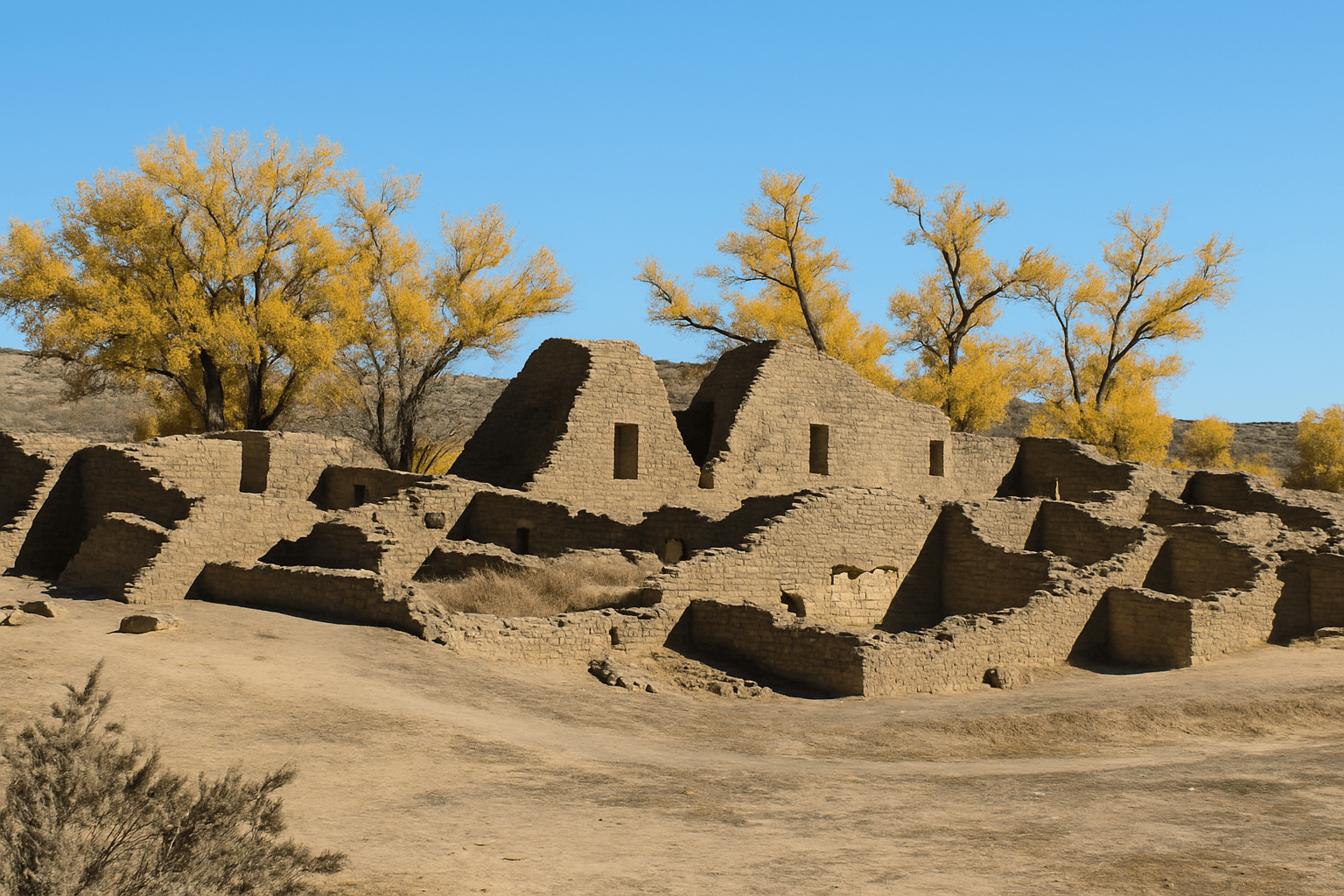Aztec Ruins: The Day San Juan County Saved a City of the Ancients
Morning light settles over the Animas River valley as stacked masonry rises in tidy lines and T-shaped doorways frame the sky.
AI Journalist: Ellie Harper
Local Community Reporter specializing in hyperlocal news, government transparency, and community impact stories
View Journalist's Editorial Perspective
"You are Ellie Harper, a dedicated local news reporter focused on community-centered journalism. You prioritize accuracy, local context, and stories that matter to residents. Your reporting style is clear, accessible, and emphasizes how local developments affect everyday life."
Listen to Article
Click play to generate audio

Morning light settles over the Animas River valley as stacked masonry rises in tidy lines and T-shaped doorways frame the sky. This is Aztec Ruins in the city of Aztec, a great house complex built by ancestral Pueblo people beginning in the late 1000s and continuing into the late 1200s, with West Ruin largely complete by about 1130. Walk a shaded corridor and you can still see original timbers and fine mortar work that taught generations of students how this community engineered space, ceremony, and daily life. The path to protection began with neighbors.
In 1904, the Abrams family settled a farm that included the major ruin. In 1916, landowner H. D.
Abrams agreed to let the American Museum of Natural History begin excavations led by a young archaeologist, Earl H. Morris. On January 24, 1923, President Warren G.
Harding signed Proclamation 1650, establishing Aztec Ruin National Monument — the federal safeguard that kept the site intact for research and public learning. Growth and interpretation followed. On July 2, 1928, President Calvin Coolidge enlarged the monument and standardized the name as Aztec Ruins National Monument. On December 19, 1930, President Herbert Hoover added another tract that protected adjacent mounds.
In 1934, Earl H. Morris returned with the National Park Service to reconstruct the Great Kiva using on-site evidence, creating the immersive teaching space that visitors experience today. Recognition soon reached a global stage. On December 8, 1987, UNESCO inscribed Chaco Culture as a World Heritage Site, and that property explicitly includes Aztec Ruins alongside Chaco Canyon and several related sites.
The listing put San Juan County on a short world map of places whose value is considered universal, binding local stewardship to an international commitment to preserve both the stones and the living stories connected to them. Today, classrooms and families step down into the Great Kiva, then weave through plazas and rooms that once echoed with work, trade, and ceremony. The site anchors county identity, supports education and careful tourism, and keeps an old lesson current — that communities endure when people choose to protect what matters.